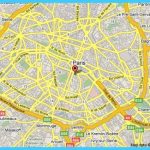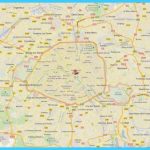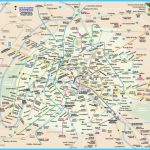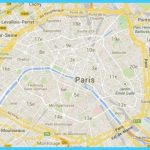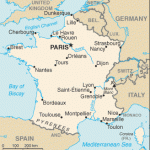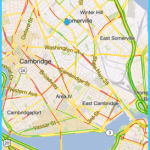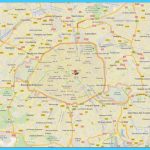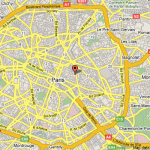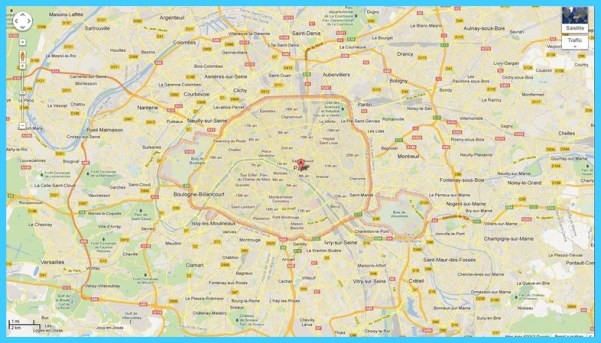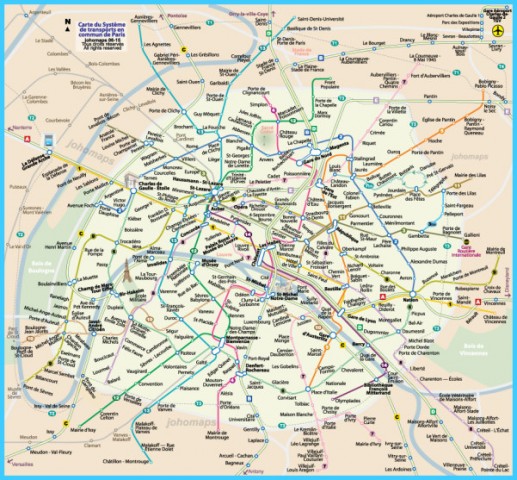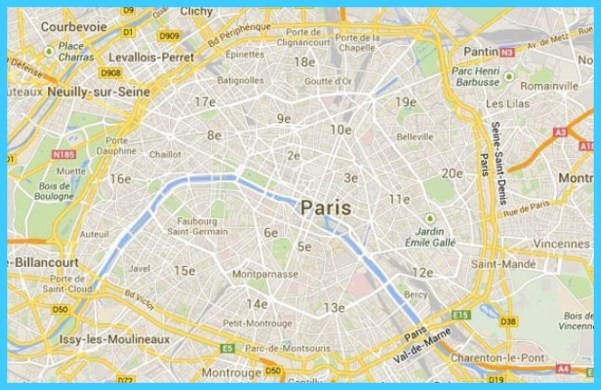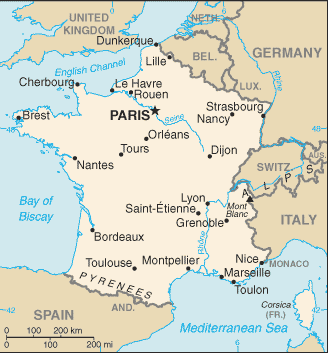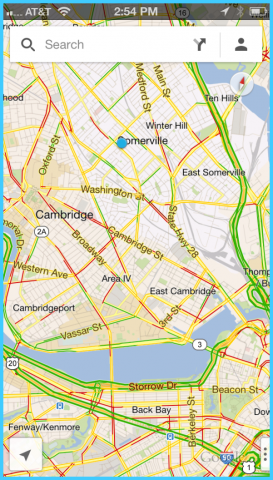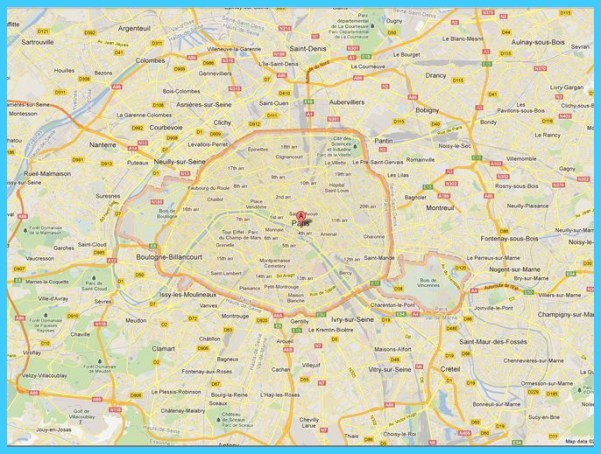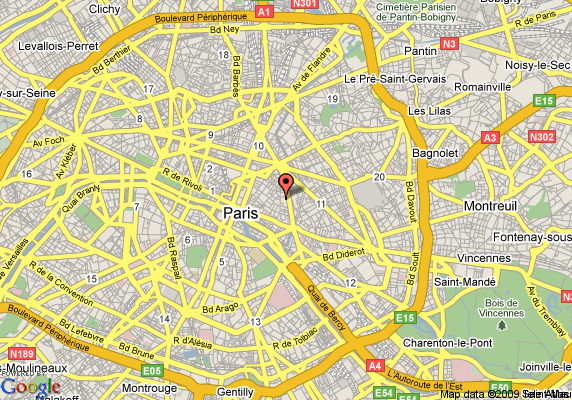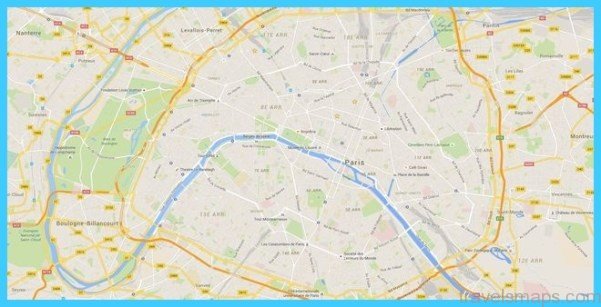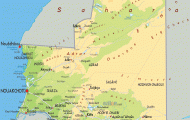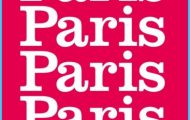Northern skyline of Paris
From any point in the flat cornfields north of le Bourget, the skyline of Paris is epigrammatically simple: the Sacre-Creur and the Tour Eiffel. Nothing symbolic, no Pantheon or Invalides, but these two funnies, built within twenty years of each other. This signature is unspoilable – what building could send them up when they are sending themselves up all the time? Free from grand aspirations, they can claim the affection which is much more worthwhile than respect: a kind of trademark to make everyone grin, like the AGIP lion.
Paris On Map Paris Map Google Photo Gallery
(Good views on a clear day from any high point near N17 to Senlis or N2 to Soissons.)
Google Maps Paris Bobigny: l’Abreuvoir Pantin: les Courtillieres
Emile Aillaud, 1958-62
Completely different from the other new groups of flats around Paris; the architect has introduced curves – and not as another piece of geometric byplay, but to provide identity and community. Both places are defined by long undulating strips of flats. At l’Abreuvoir, they enclose piquant circular blocks, but the estate is split by a main road and the pastel-coloured walls cannot create their own rhythm. Les Courtillieres is self-contained, the rippling boundary containing a rippling landscape and a rippling infants’ school. Outside, this membrane is painted a neutral colour between white and blue. The inside, free from traffic, has been treated in pastel pink and grey which for once is really expert – a tricky sweet-and-sour effect that could have failed dismally.
(L’Abreuvoir is not marked on Michelin, but is easily recognizable, astride D30 between Drancy and Bobigny. Les Courtillieres may take a bit of finding: turn to the east off N2 (the road in from le Bourget) about 2 km out from Porte de la Villette. The estate is hidden from N2 by an unpleasant set of point blocks faced with something bluey-greeny.)
Le Rainey: Notre-Dame
Auguste Perret, 1922
Perret’s first church, and world-famous. The site may be a surprise: from a cheerful rond-point by the station, the avenue de la Resistance makes off to the north-east along with a familiar avenue of trees. The church stands a little back, with less to signify than if it had been a petrol station. The outside is meaningless, as maybe it had to be, the backside of the huge windows minutely patterned in concrete. The intention was perhaps to make a new kind of Sainte-Chapelle – just as in his public buildings Perret was trying to make a new kind of Versailles. The inside has not turned out quite like this. Where the glass can dominate the concrete – round the apse, with vivid blues flecked with red – then the recipe works. Elsewhere the glass loses its force, the concrete breaks in, the equation breaks down. What is left is something quite different, something which Perret lost later on: a youthful, truly Gothic delight in rough concrete. Not well worked out, but living, in the spring of the segmental arches high up ending near the apse in a stretch of straightforward lintel as though they didn’t know what to do with the odd bit over. This impulsiveness rescues le Rainey from the small-minded pedantry which is hanging around, waiting to pounce; but for nobility and stature go three hundred miles south-east to what is reckoned to be a copy, in Sankt Anthonius at Basel.
(Le Rainey is just south of N3, about ten miles out from the centre of Paris.)
Maybe You Like Them Too
- The Best Places To Visit In North America For Christmas
- Faro Travel Guide: Map of Faro
- Mumbai Travel Guide For Tourists: Map Of Mumbai
- Travel to Budapest
- Thailand Travel Guide for Tourists: The Ultimate Thailand Map

